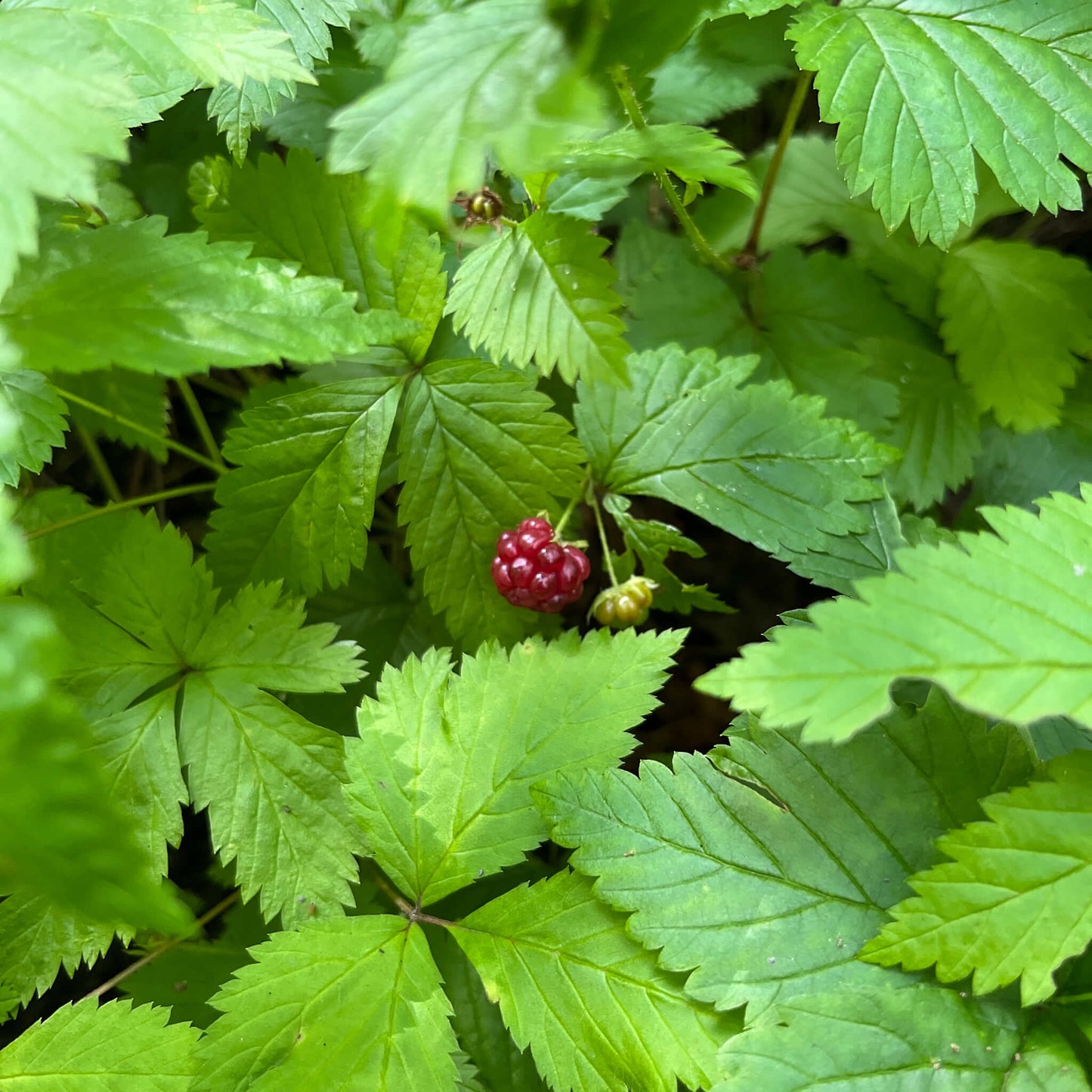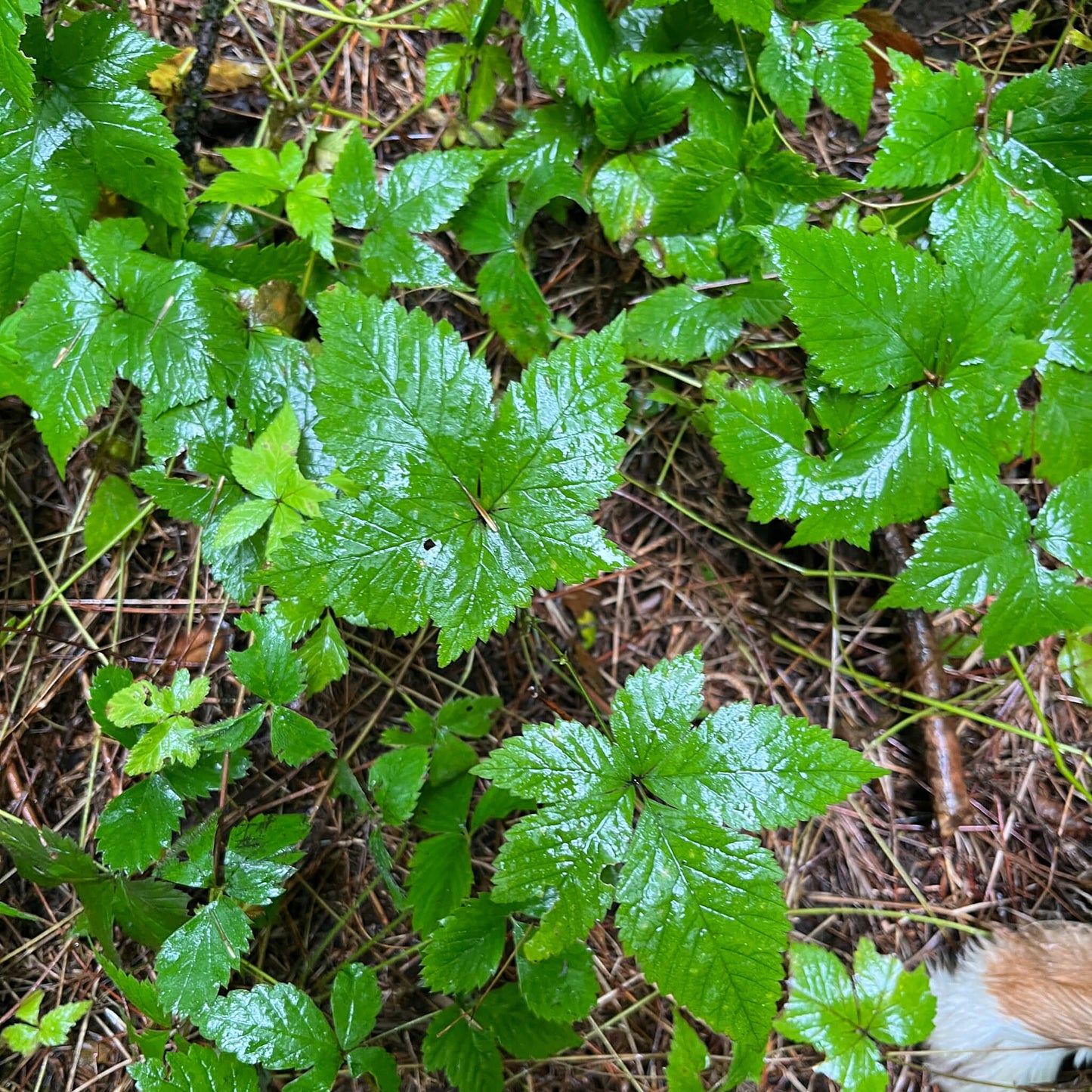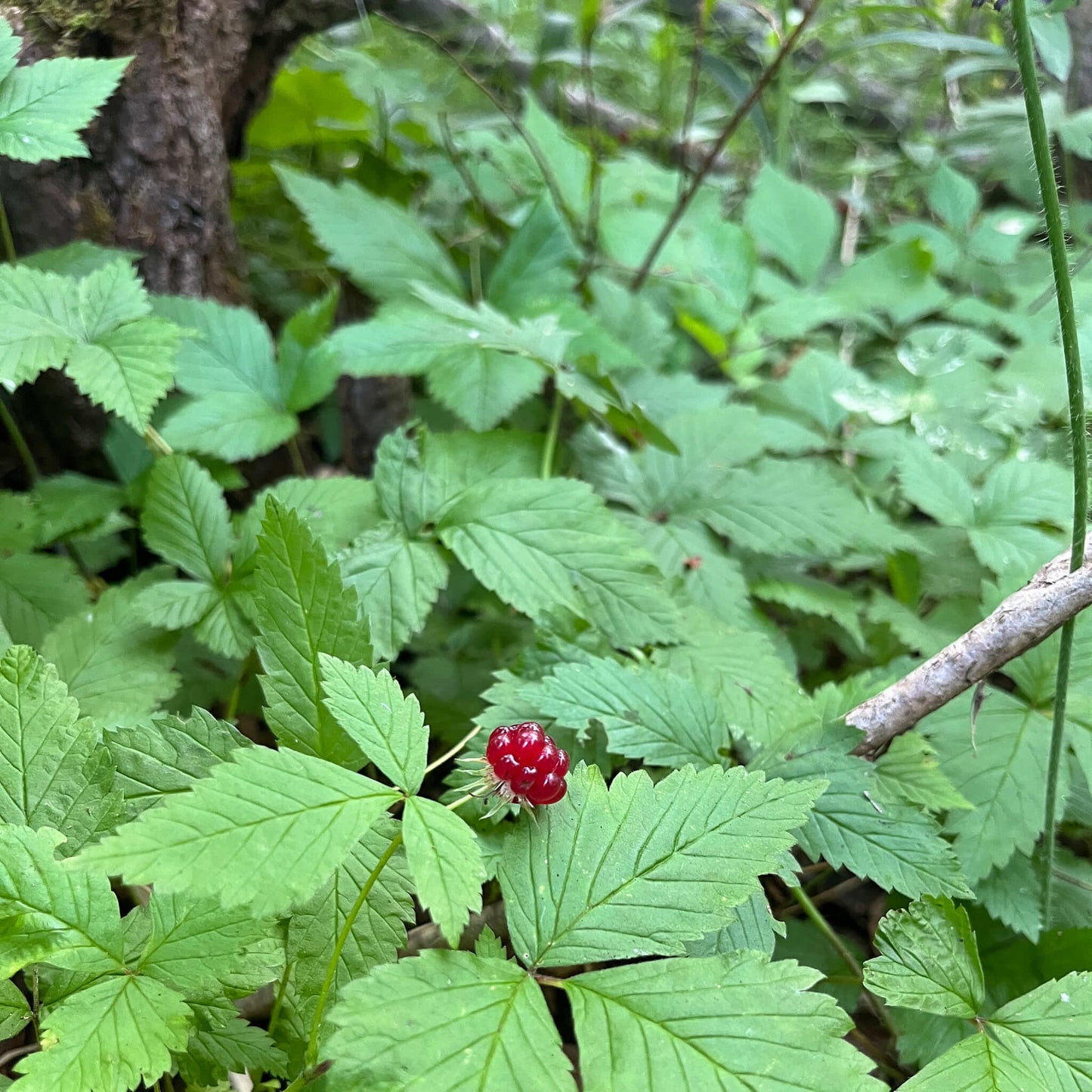This site is protected by hCaptcha and the hCaptcha Privacy Policy and Terms of Service apply.
For successful seedlings,
see the growing notes at the bottom of the page!
Dwarf raspberry (Rubus pubescens) is a low-growing perennial plant that typically reaches up to 30 cm in height. It is easily recognizable by its slender, hairy stems and its leaves, which are composed of three serrated leaflets of a deep green colour, sometimes slightly hairy on the underside. Its small, five-petaled white flowers appear in spring, followed by small, juicy red fruits that resemble miniature raspberries. This plant prefers moist, organic-rich soils, often found in cool, swampy forests and along waterways. Very hardy, this species is well adapted to the cold climates of Quebec.
Medicinal and Culinary Uses
The leaves are astringent and stomachic. The delicate and flavourful fruits are edible raw or cooked.
Ecological Role
Dwarf raspberry plays an important ecological role in wetlands and forests. Its flowers provide nectar to bees and other pollinating insects early in the summer season. The fruits are a food source for several birds and small mammals, such as squirrels and voles. This plant also helps stabilize moist soils, forming a dense cover that limits erosion and protects riverbanks.
Dwarf raspberry seeds require cold stratification to ensure germination. See the cultivation notes below for more details.
Akène cannot assume any responsibility for the use of plants for therapeutic purposes. Always seek advice from a professional before using a medicinal or edible plant.
Sowing and Growing
Technical Details
Seeds per packet: 50
Family: Rosaceae
Scientific name: Rubus pubescens
Life cycle: Perennial
Hardiness zone: 2
Soil type: Loamy to clayey
Soil moisture level: Medium to slightly humid
Soil - additional attributes:
Light: Part shade, shade
Blooming: June
Spacing: 60 cm
Height: 30 cm
Deer resistance: Low
Stratification: 60 days
Scarification: No
Germination time: 30 to 60 days
Sowing depth: 5 mm



